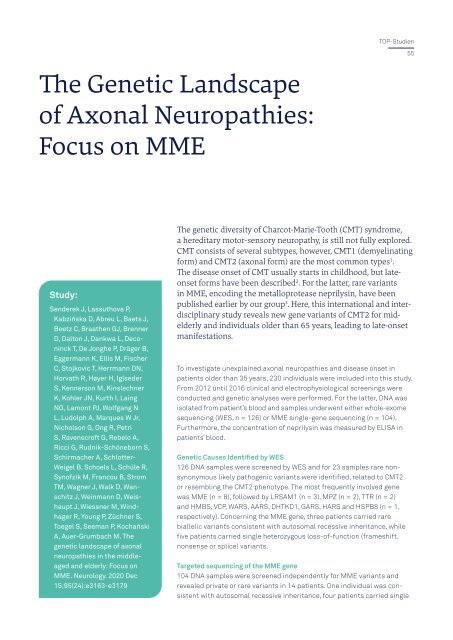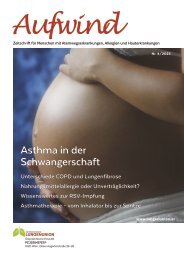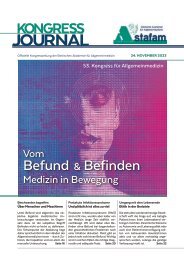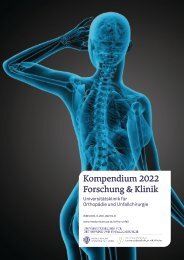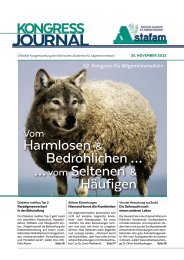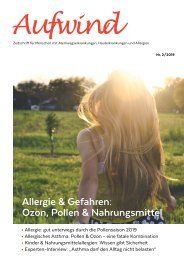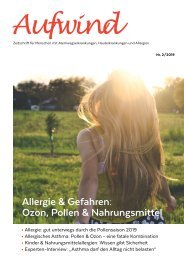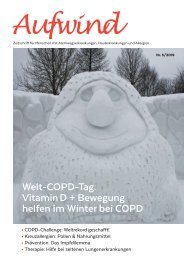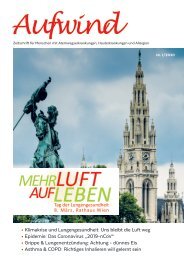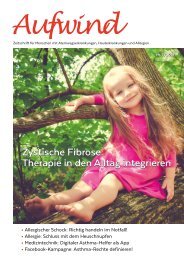Kompendium 2020 Forschung & Klinik
Das Kompendium 2020 der Universitätsklinik für Orthopädie und Unfallchirurgie von MedUni Wien und AKH Wien (o. Univ.-Prof. R. Windhager) stellt einen umfassenden Überblick über die medizinsichen Leistungen und auch die umfangreichen Forschungsfelder dar. Die Veröffentlichungen zeigen die klinische Relevanz und innovative Ansätze der einzelnen Forschungsrichtungen. Herausgeber: Universitätsklinik für Orthopädie und Unfallchirurgie MedUni Wien und AKH Wien Prof. Dr. R. Windhager ISBN 978-3-200-07715-7
Das Kompendium 2020 der Universitätsklinik für Orthopädie und Unfallchirurgie von MedUni Wien und AKH Wien (o. Univ.-Prof. R. Windhager) stellt einen umfassenden Überblick über die medizinsichen Leistungen und auch die umfangreichen Forschungsfelder dar. Die Veröffentlichungen zeigen die klinische Relevanz und innovative Ansätze der einzelnen Forschungsrichtungen.
Herausgeber: Universitätsklinik für Orthopädie und Unfallchirurgie
MedUni Wien und AKH Wien
Prof. Dr. R. Windhager
ISBN 978-3-200-07715-7
Create successful ePaper yourself
Turn your PDF publications into a flip-book with our unique Google optimized e-Paper software.
TOP-Studien<br />
The Genetic Landscape<br />
of Axonal Neuropathies:<br />
Focus on MME<br />
55<br />
Study:<br />
Senderek J, Lassuthova P,<br />
Kabzińska D, Abreu L, Baets J,<br />
Beetz C, Braathen GJ, Brenner<br />
D, Dalton J, Dankwa L, Deconinck<br />
T, De Jonghe P, Dräger B,<br />
Eggermann K, Ellis M, Fischer<br />
C, Stojkovic T, Herrmann DN,<br />
Horvath R, Høyer H, Iglseder<br />
S, Kennerson M, Kinslechner<br />
K, Kohler JN, Kurth I, Laing<br />
NG, Lamont PJ, Wolfgang N<br />
L, Ludolph A, Marques W Jr,<br />
Nicholson G, Ong R, Petri<br />
S, Ravenscroft G, Rebelo A,<br />
Ricci G, Rudnik-Schöneborn S,<br />
Schirmacher A, Schlotter-<br />
Weigel B, Schoels L, Schüle R,<br />
Synofzik M, Francou B, Strom<br />
TM, Wagner J, Walk D, Wanschitz<br />
J, Weinmann D, Weishaupt<br />
J, Wiessner M, Windhager<br />
R, Young P, Züchner S,<br />
Toegel S, Seeman P, Kochański<br />
A, Auer-Grumbach M. The<br />
genetic landscape of axonal<br />
neuropathies in the middleaged<br />
and elderly: Focus on<br />
MME. Neurology. <strong>2020</strong> Dec<br />
15;95(24):e3163-e3179<br />
The genetic diversity of Charcot-Marie-Tooth (CMT) syndrome,<br />
a hereditary motor-sensory neuropathy, is still not fully explored.<br />
CMT consists of several subtypes, however, CMT1 (demyelinating<br />
form) and CMT2 (axonal form) are the most common types 1 .<br />
The disease onset of CMT usually starts in childhood, but lateonset<br />
forms have been described 2 . For the latter, rare variants<br />
in MME, encoding the metalloprotease neprilysin, have been<br />
published earlier by our group 3 . Here, this international and interdisciplinary<br />
study reveals new gene variants of CMT2 for midelderly<br />
and individuals older than 65 years, leading to late-onset<br />
manifestations.<br />
To investigate unexplained axonal neuropathies and disease onset in<br />
patients older than 35 years, 230 individuals were included into this study.<br />
From 2012 until 2016 clinical and electrophysiological screenings were<br />
conducted and genetic analyses were performed. For the latter, DNA was<br />
isolated from patient’s blood and samples underwent either whole-exome<br />
sequencing (WES, n = 126) or MME single-gene sequencing (n = 104).<br />
Furthermore, the concentration of neprilysin was measured by ELISA in<br />
patients’ blood.<br />
Genetic Causes Identified by WES<br />
126 DNA samples were screened by WES and for 23 samples rare nonsynonymous<br />
likely pathogenic variants were identified, related to CMT2<br />
or resembling the CMT2 phenotype. The most frequently involved gene<br />
was MME (n = 8), followed by LRSAM1 (n = 3), MPZ (n = 2), TTR (n = 2)<br />
and HMBS, VCP, WARS, AARS, DHTKD1, GARS, HARS and HSPB8 (n = 1,<br />
respectively). Concerning the MME gene, three patients carried rare<br />
biallelic variants consistent with autosomal recessive inheritance, while<br />
five patients carried single heterozygous loss-of-function (frameshift,<br />
nonsense or splice) variants.<br />
Targeted sequencing of the MME gene<br />
104 DNA samples were screened independently for MME variants and<br />
revealed private or rare variants in 14 patients. One individual was consistent<br />
with autosomal recessive inheritance, four patients carried single


